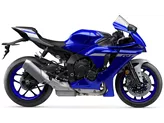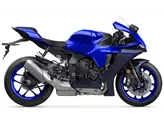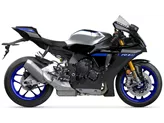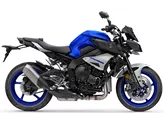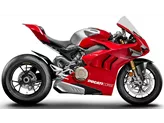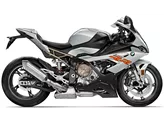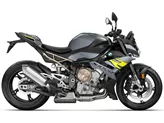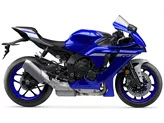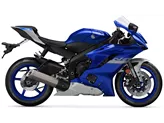BMW S 1000 RR 2015 vs. Yamaha R1 2010
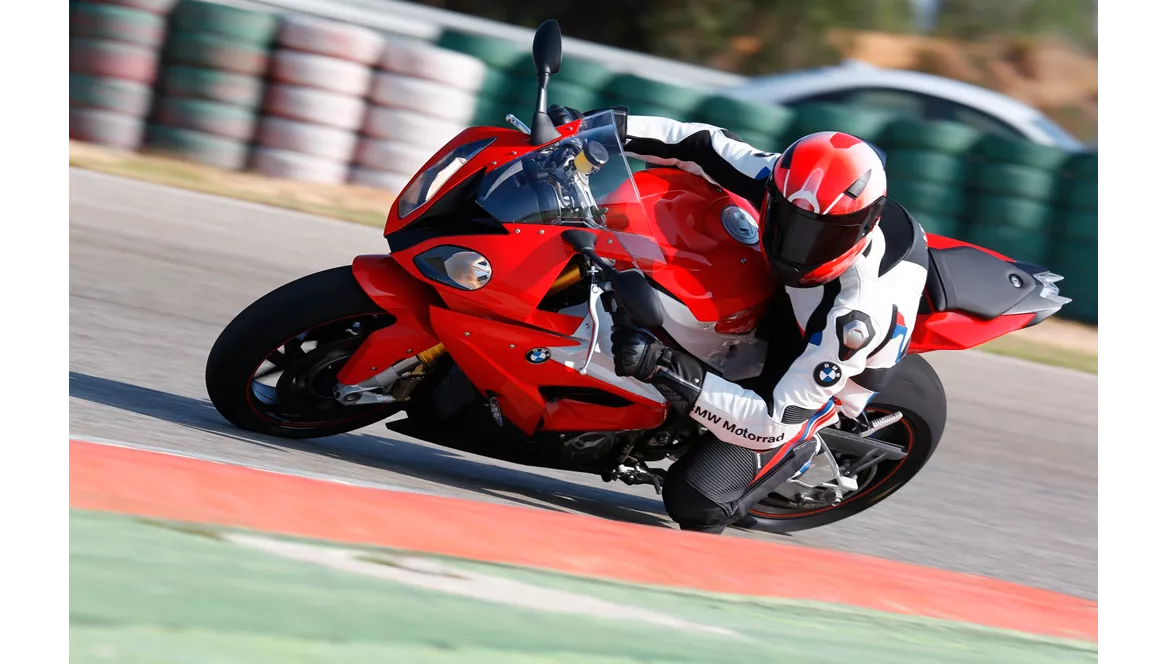
BMW S 1000 RR 2015

Yamaha R1 2010
Vue d’ensemble - BMW S 1000 RR 2015 vs Yamaha R1 2010
The BMW S 1000 RR model year 2015 and the Yamaha R1 model year 2010 are both high-performance supersport motorcycles. While they have some similarities in terms of engine power, torque, and displacement, there are also notable differences in their technical specifications and overall performance.
In terms of engine specifications, the BMW S 1000 RR 2015 has a bore of 80 mm and a stroke of 49.7 mm, while the Yamaha R1 2010 has a slightly smaller bore of 78 mm and a larger stroke of 52.2 mm. Both motorcycles have a 4-cylinder engine with a displacement of around 1000 cc. However, the BMW S 1000 RR 2015 has a higher engine power of 199 HP compared to the Yamaha R1 2010's 181 HP. The torque is also higher in the BMW S 1000 RR 2015 with 113 Nm compared to the Yamaha R1 2010's 115.5 Nm.
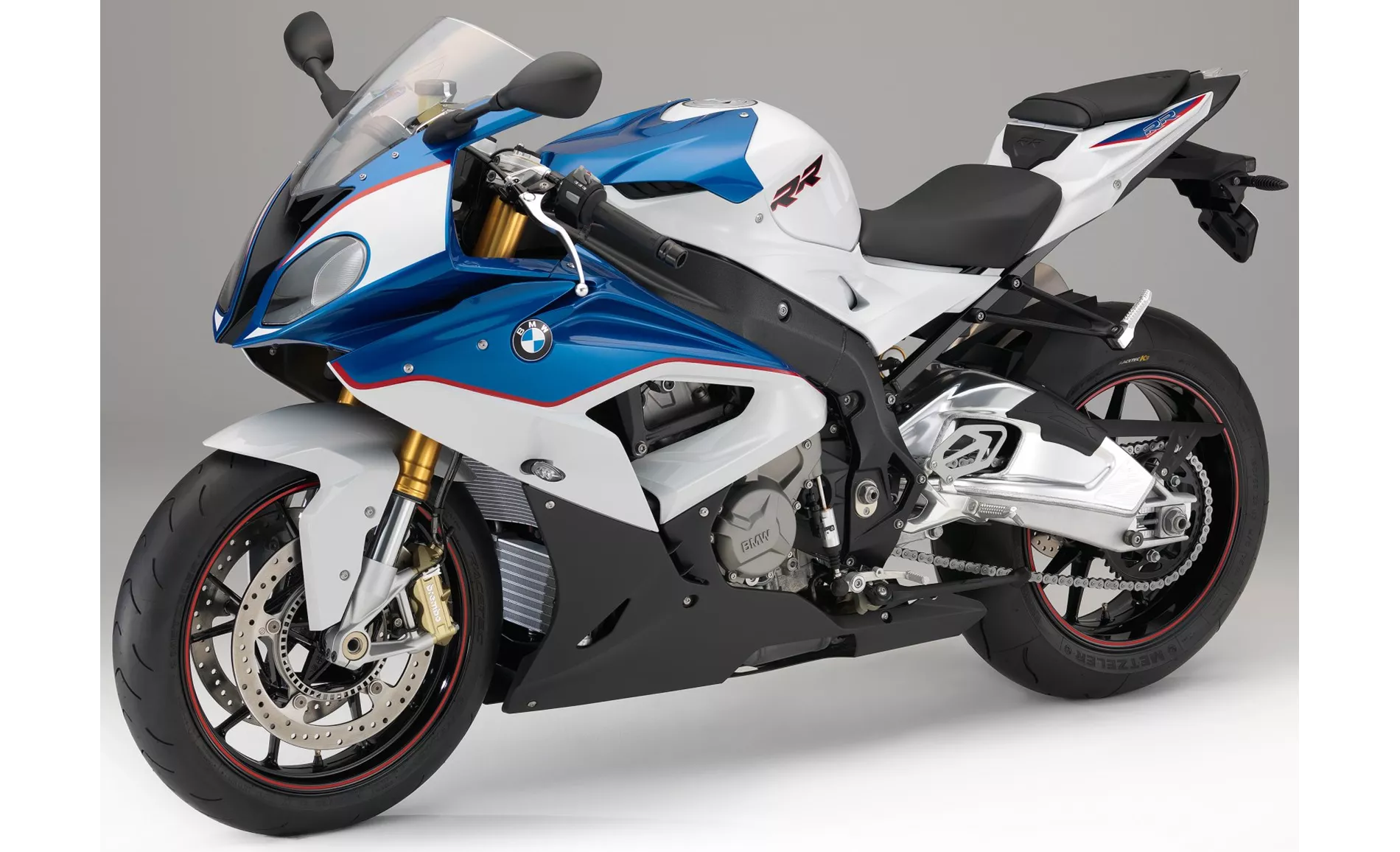
BMW S 1000 RR 2015
In terms of suspension, the BMW S 1000 RR 2015 features a telescopic fork at the front, while the Yamaha R1 2010 has an upside-down telescopic fork. Both motorcycles have an aluminum frame, with the BMW S 1000 RR 2015 having a twin tube frame type and the Yamaha R1 2010 having a Deltabox frame type. Both motorcycles also have double disk brakes at the front.
In terms of dimensions and weights, there are slight differences between the two motorcycles. The BMW S 1000 RR 2015 has a front tire width of 120 mm and a rear tire width of 190 mm, while the Yamaha R1 2010 has the same tire widths. Both motorcycles have a wheelbase of around 1400 mm, with the BMW S 1000 RR 2015 having a slightly longer wheelbase of 1425 mm. The seat height is also slightly different, with the BMW S 1000 RR 2015 having a seat height of 815 mm and the Yamaha R1 2010 having a seat height of 835 mm. The fuel tank capacity is 17.5 liters for the BMW S 1000 RR 2015 and 18 liters for the Yamaha R1 2010.
Now, let's discuss the strengths and weaknesses of each motorcycle. The BMW S 1000 RR 2015 has several strengths, including a superb shift assistant, an incredibly powerful and rev-happy engine, a great range of accessories, and a race-ready data logging tool and calibration tool available. On the other hand, its weakness lies in the chassis, which can quickly reach its limit in the hands of professionals.

Yamaha R1 2010
The Yamaha R1 2010 also has its own strengths, including a strong engine, a sophisticated engine character, an optimal braking system, and a comfortable seating position. However, it has some weaknesses as well, such as suboptimal suspension elements, lower peak power compared to the BMW S 1000 RR 2015, slightly weak traction, and a higher weight.
In conclusion, both the BMW S 1000 RR 2015 and the Yamaha R1 2010 are impressive supersport motorcycles with their own unique strengths and weaknesses. The BMW S 1000 RR 2015 excels in terms of engine power and additional features, while the Yamaha R1 2010 offers a comfortable riding experience and a reliable braking system. Ultimately, the choice between the two would depend on the rider's preferences and priorities.
Caractéristiques techniques BMW S 1000 RR 2015 par rapport à Yamaha R1 2010
Avantages et inconvénients en comparaison
Avantages et inconvénients en comparaison
BMW S 1000 RR 2015
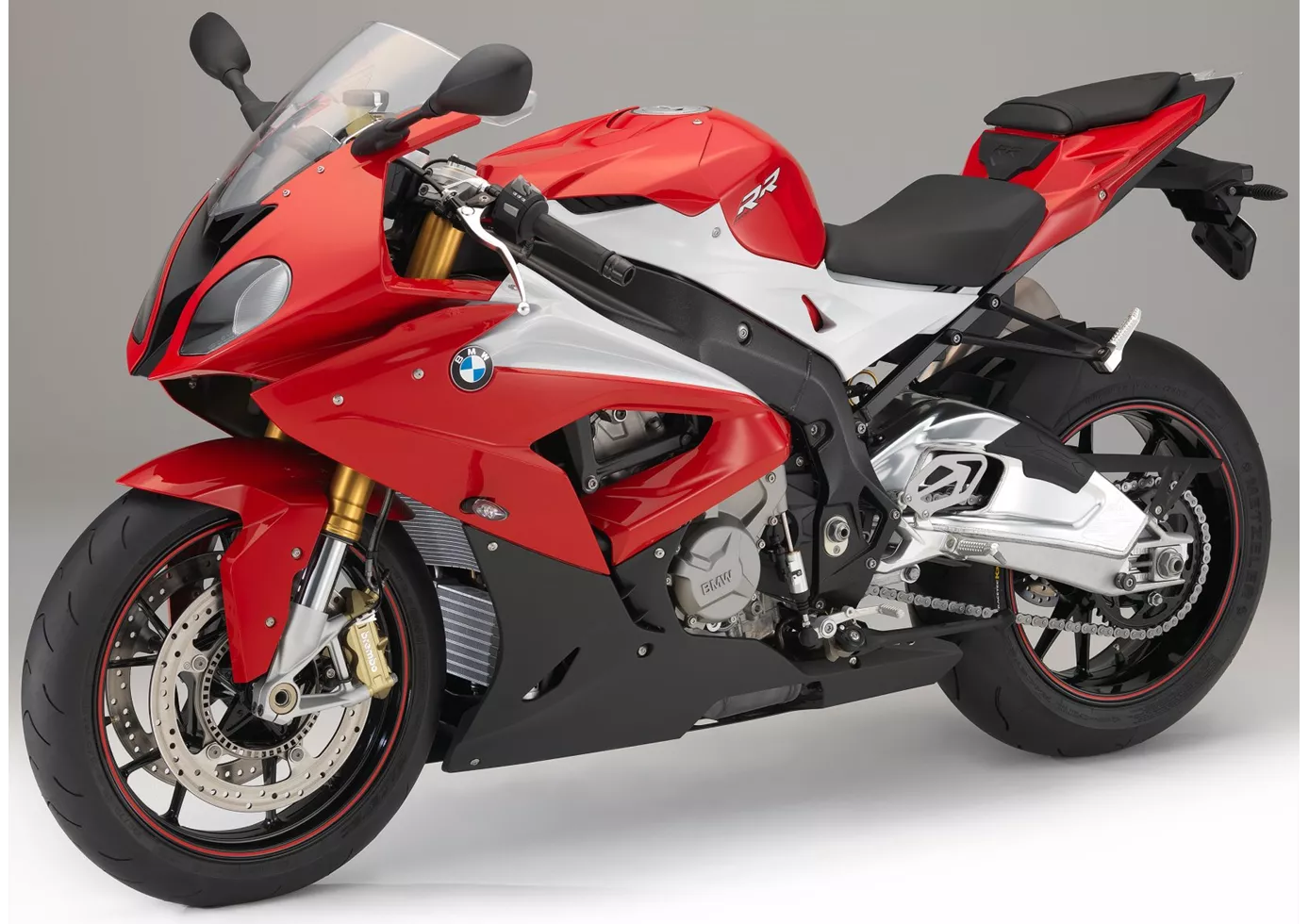
Avec des faits concrets, la BMW peut encore marquer des points en 2015. Si vous aimez les performances de pointe, vous devez acheter la BMW. Elle vire en haut avec une puissance incroyable et distancie le reste du peloton dès 200. Les pilotes grands et lourds pourront en profiter encore plus. BMW n'a pas choisi la facilité avec cette machine et a mis sur pied une moto très universelle. Si l'on faisait un test comparatif avec 50 pilotes différents (du rookie au professionnel), la BMW obtiendrait la meilleure moyenne de toutes les motos de 1000 cm3. Le châssis électronique, mais aussi les aides à la conduite, permettent aux professionnels d'aller vite et aux débutants de rouler en toute sécurité. Une recommandation top pour un groupe cible très large. Les pilotes amateurs très rapides ne seront pas satisfaits à 100% par le châssis de série. Ceux qui ne souhaitent pas modifier le châssis devraient plutôt se tourner vers une R1M, une Panigale S ou encore une RSV RF. Quant à ceux qui modifient de toute façon leur moto, ils trouveront avec la S 1000 RR la base la plus puissante et la plus universelle. De manière surprenante, cette machine à la puissance d'ours se comporte également très bien sur les routes de campagne. Dans l'ensemble, cela ressemble à un compromis, mais dans la pratique, ce n'est jamais le cas.
Yamaha R1 2010
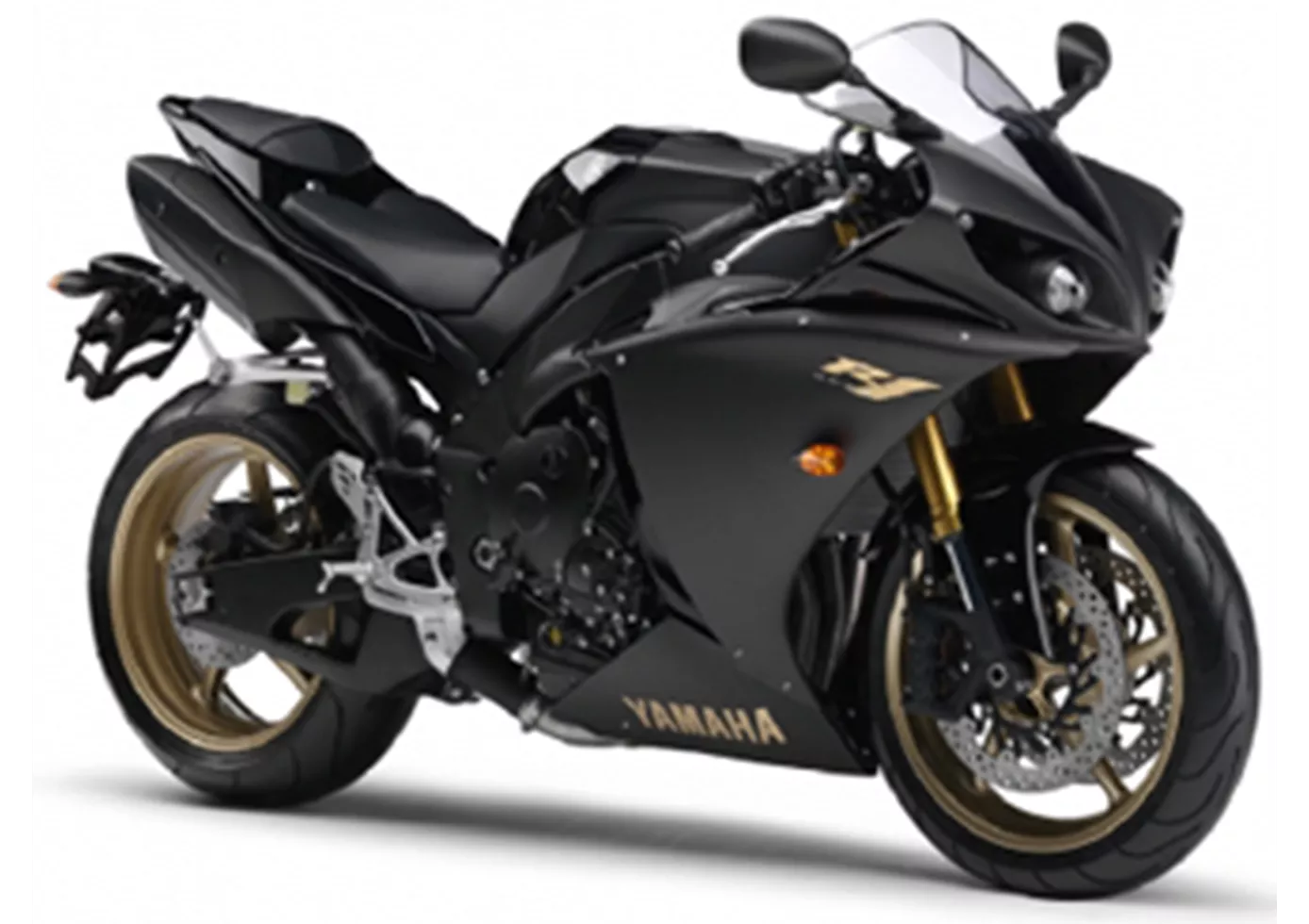
Le moteur actuel de la R1 se distingue par sa sonorité caractéristique, sa réactivité et sa puissance linéaire. En ce qui concerne la puissance de pointe, Yamaha a toutefois dû faire quelques concessions.
Comparaison des prix Prix moyen du marché BMW S 1000 RR vs Yamaha R1
There are a few key differences between a BMW S 1000 RR 2015 and a Yamaha R1 2010. In terms of price, the actual average price of a BMW S 1000 RR 2015 is about 43% higher. Compared to Yamaha R1 2010 there are more BMW S 1000 RR 2015 bikes available on the 1000PS.de Marketplace, specifically 8 compared to 5. It takes less time to sell a Yamaha R1 with 53 days compared to 77 days for the BMW S 1000 RR. Since model year 2010 1000PS.de editors have written 135 reviews for the BMW S 1000 RR and 80 reviews for the Yamaha R1 since model year 2005. The first review for the BMW S 1000 RR was published on 4/16/2008 and now has more than 4,000 views. This compares to more than 3,900 views for the first review on Yamaha R1 published on 4/28/2003.


